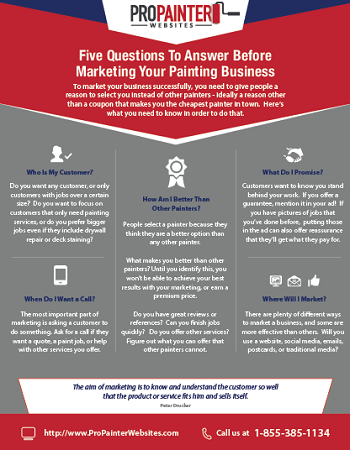Explore The Function Of Seasonal Factors In The Success Of Business Exterior Painting And Uncover The Very Best Times To Safeguard Lasting Outcomes For Your Task
Explore The Function Of Seasonal Factors In The Success Of Business Exterior Painting And Uncover The Very Best Times To Safeguard Lasting Outcomes For Your Task
Blog Article
Authored By-Burnham Rodriquez
When you're preparing a commercial external painting task, seasonal variables can make or damage your outcomes. You'll intend to take into consideration just how temperature and humidity effect paint application and drying times. Choosing the ideal period can guarantee your paint sticks effectively and lasts much longer. However which periods are really the very best for this sort of work? Allow's explore the crucial elements that can influence your task's success.
The Effect of Temperature on Paint Application
When you're planning an industrial exterior paint task, the temperature level can substantially impact how well the paint sticks and dries.
Ideally, you want to paint when temperatures range in between 50 ° F and 85 ° F. If it's as well cool, the paint might not treat properly, leading to problems like peeling or splitting.
On mouse click the next webpage , if it's too hot, the paint can dry out too quickly, preventing correct adhesion and leading to an unequal coating.
You need to also take into consideration the time of day; early morning or late afternoon uses cooler temperature levels, which can be a lot more favorable.
Constantly check the supplier's referrals for the specific paint you're making use of, as they typically give guidance on the perfect temperature level array for optimal outcomes.
Moisture and Its Impact on Drying Times
Temperature isn't the only ecological factor that influences your commercial exterior paint job; humidity plays a significant function also. High humidity degrees can slow down drying times drastically, affecting the general quality of your paint job.
When the air is saturated with wetness, the paint takes longer to heal, which can result in problems like bad bond and a higher danger of mold development. If you're repainting on a particularly damp day, be prepared for extensive delay times between layers.
It's vital to monitor neighborhood weather conditions and plan appropriately. Ideally, go for moisture degrees between 40% and 70% for optimal drying out.
Keeping these factors in mind guarantees your job stays on track and delivers a long lasting coating.
Best Seasons for Commercial Exterior Paint Projects
What's the most effective season for your commercial external painting jobs?
Spring and early fall are normally your best options. During these seasons, temperatures are moderate, and moisture levels are frequently reduced, producing perfect conditions for paint application and drying out.
Avoid summer season's intense heat, which can trigger paint to dry also quickly, bring about bad adhesion and surface. Similarly, winter season's cold temperature levels can prevent appropriate drying out and treating, risking the durability of your paint work.
Aim for days with temperatures in between 50 ° F and 85 ° F for optimum outcomes. Suggested Browsing in mind to check the local weather forecast for rainfall, as wet conditions can spoil your job.
Planning around these factors guarantees your paint project runs smoothly and lasts longer.
Verdict
In conclusion, preparing your business outside paint jobs around seasonal factors to consider can make a substantial difference in the result. By organizing work throughout the ideal temperatures and humidity levels, you'll ensure far better bond and drying out times. Bear in mind to keep an eye on regional weather prediction and select the right time of year-- springtime and very early fall are your best bets. Taking these steps will aid you attain a resilient and professional finish that lasts.
